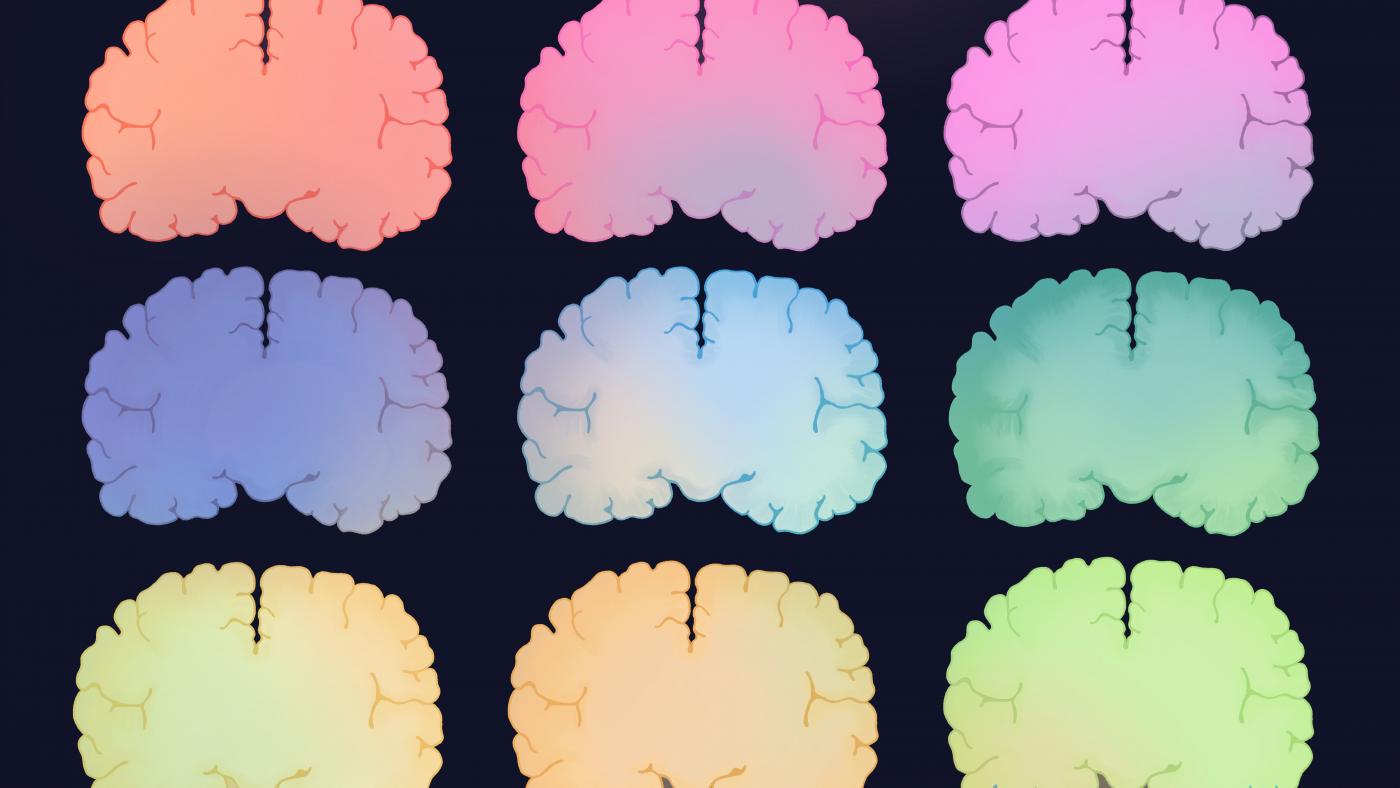NEW YORK – To decipher how mysterious, seemingly intangible states of mind such as thoughts and feelings arise from networks of brain cells, the BRAIN Initiative has awarded $18.3 million to a team of neuroscientists co-led by a researcher at Columbia's Zuckerman Institute. Analyzing the circuitry underlying these internal states could help scientists understand the variations between different kinds of brains, such as those of neurotypical and autistic people, when it comes to tasks such as learning.
This five-year award, administered by the National Institutes of Health (NIH), will bring together scientists across 10 institutions who have pioneered key technologies, state-of-the-art analysis methods and modeling approaches needed to make sense of the massive datasets that this endeavor will collect. This funding, which was created to support exceptional teams addressing pressing questions in neuroscience, is the third award given directly to the Zuckerman Institute BRAIN Initiative’s Team-Research BRAIN Circuit U19 program.
"Scientists have long explored what happens in the brain when an animal chooses to look at something, for instance, or move in a certain way" said Liam Paninski, PhD, a theoretical neuroscientist at the Zuckerman Institute and co-lead investigator on the project. "The question we want to answer is: How does an animal’s internal states — its mood, for example, or its levels of hunger and fatigue — affect those decisions?”
A major focus of the project is analyzing differences between typical mice and those serving as models of autism, which show reduced flexibility when it comes to making decisions that take changing expectations into account. Decision-making is also impaired in addiction and schizophrenia, so a deeper understanding of brain-wide decision-making circuitry may contribute to future research on ways to treat these disorders.
How does an animal’s internal states — its mood, for example, or its levels of hunger and fatigue — affect those decisions?
Dr. Paninski will codirect, along with Anne Churchland, PhD, from the University of California, Los Angeles (UCLA), a synergistic team of experimentalists, theoretical modelers and data scientists. The group already has a productive history of working together in the International Brain Laboratory collaboration, which was founded in 2017 to establish a novel, rigorous, reproducible and fully open-science framework to study learning and decision-making.
The project's overarching goal is to create the first model of the brain circuitry underlying internal states such as attitudes and memories that influence the process of making a decision. The scientists will record brain cell behavior simultaneously across many areas of the entire brain as mice perform various tasks. They will then employ computational approaches to model how different brain regions communicated during these activities, as well as advanced statistical tools to infer what internal states the animals experienced during these tasks.
"People have been thinking about these internal states for centuries, but it's only recently that we've had the technology to start to record these aspects of the brain," Paninski said.
 Data collected by nine laboratories from the International Brain Laboratory, recording from a variety of brain regions in mice under standardized conditions.
Data collected by nine laboratories from the International Brain Laboratory, recording from a variety of brain regions in mice under standardized conditions.
The researchers will study lab mice as they play a type of video game. The researchers will then assess three kinds of shifts in internal states: those depending on a mouse's engagement or disengagement in a task, those resulting from changing expectations during the task and those resulting from learning over time. The scientists hypothesize that differences in internal states may correspond to changes in the flow of information between brain regions.
Paninski and his colleagues will also identify cell types in these brain regions based on gene expression, physical structure and interactions with other cells to discover how distinct cell types participate in internal states. The researchers will switch a variety of cells on or off in these areas of the brain to learn more about what role different brain areas play in decision-making.
Traditionally, individual neuroscience laboratories have studied decision-making by focusing on one or a few brain regions. The new project takes a broader approach.
"We want to create a brain-wide understanding of the process," Paninski said.
The research team will also produce and disseminate open-source tools and protocols that will enable other laboratories to collect, analyze, model, and manage large-scale datasets produced through brainwide measurements.
"The plan is to share all our data," Paninski said. "I think that's really exciting, and it's a big challenge to set that up and to make it work."
Announced in 2013 by President Barack Obama, The Brain Research through Advancing Innovative Neurotechnologies, or BRAIN Initiative, aims to accelerate and revolutionize the understanding of the human brain. The BRAIN Initiative has supported scientists from across the United States to develop innovative tools and technologies that explore the brain’s inner workings.
Award details are as follows:
“State-dependent Decision-making in Brainwide Neural Circuits” (1U19NS123716-01). Total award amount: $18,347,595 over five years.
Liam Paninski, PhD (Program co-PI), Professor of Statistics and Neuroscience; Principal Investigator at Columbia's Zuckerman Institute
Anne Churchland, PhD (Program co-PI), Professor of Neurobiology at the University of California, Los Angeles
Dora Angelaki, PhD, Professor of Neuroscience at New York University
Matteo Carandini, PhD, Professor of Neuroscience at University College London
Ila Fiete, PhD, Professor of Brain and Cognitive Sciences at MIT
Surya Ganguli, PhD, Associate Professor of Applied Physics, Stanford University
Tom Mrsic-Flogel, PhD, Professor of Neuroscience at University College London
Jonathan Pillow, PhD, Professor of Psychology and Neuroscience at Princeton University
Nicholas Steinmetz, PhD, Assistant Professor, Department of Biological Structure at the University of Washington
Ilana Witten, PhD, Professor of Psychology and Neuroscience at Princeton University
Anthony Zador, PhD, Professor of Neuroscience at Cold Spring Harbor Laboratory
Other team members at Columbia: Hannah Bayer, Ph.D., and Arthur Uhimov



